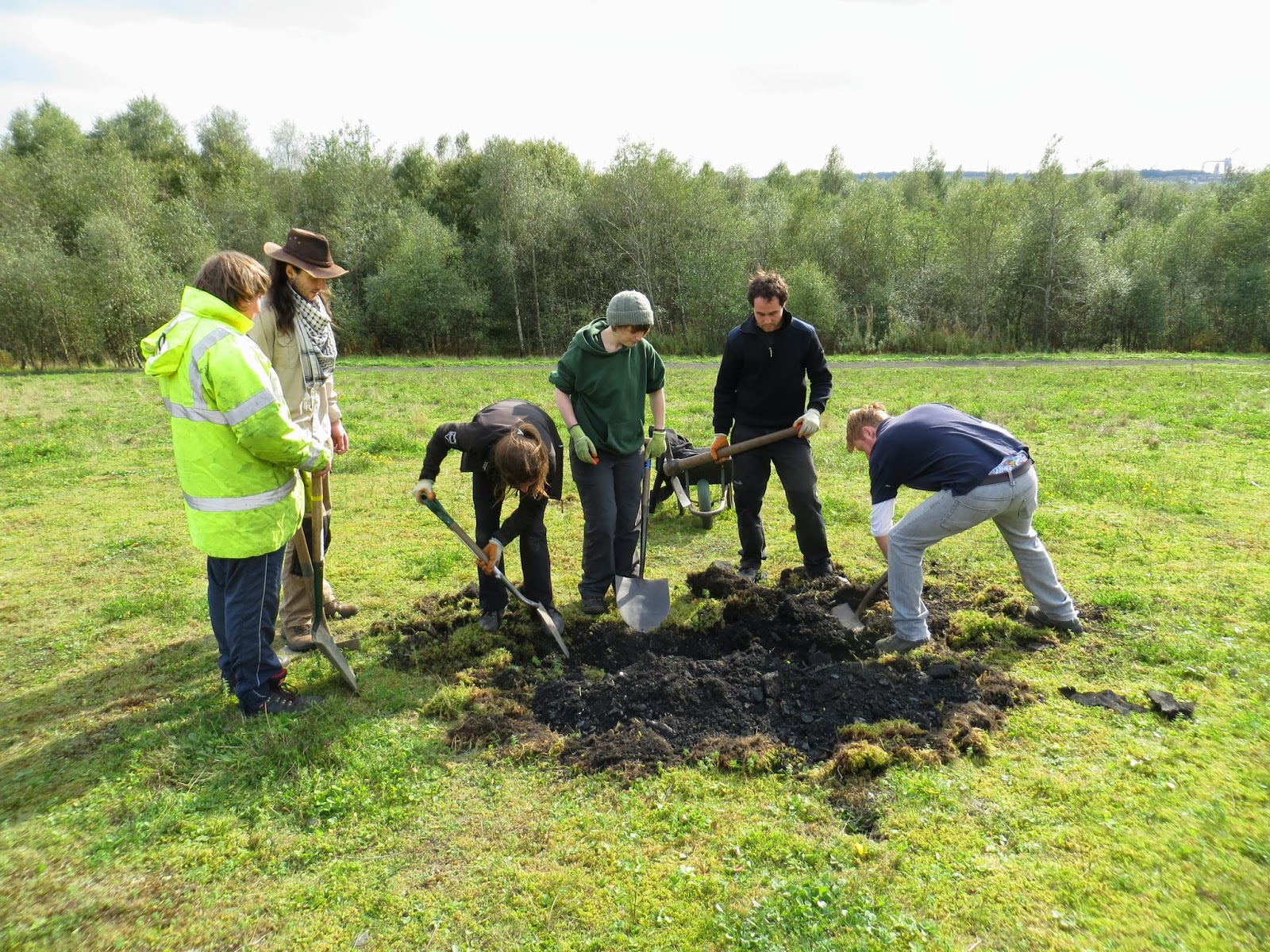TCV Natural Communities trainee Paul Gunn is busy working on the digital record for the Heritage Lottery Funded All Our Stories project at Fallin Bing. As part of the digital record we have to supply either 20 photographs or a short video of the work we have been doing. For this project at Fallin, our digital record will consist of 20 photographs that show people using the site, volunteers doing habitat creation work and having fun, the stunning views from the top of the bing and also the wildlife at the site. We will also have a short 10-15 minute video showing volunteers at work on site removing scrub and creating habitat piles and shots of some of the wildlife that can be found at the site. The video will also have stories shared by members of the local community about life in the coal mine and Fallin Bing as it is today. This digital record will be shared with Heritage Lottery Fun as well as the people of Fallin and the surrounding area.
.JPG) |
| The Ochils to the north-east of Fallin have a light coating of snow on the highest peak Ben Cleuch. |
This week, Paul and I aimed to get out to Fallin Bing and do
some more filming at the site but with the storm that hit yesterday we weren’t
sure if we would be able to do this. Amazingly today there was complete calm
over the Stirling area and we went to Fallin and completed our filming. Fallin Bing
looked completely untouched by the storm and there didn’t appear to be any
fallen trees. Although it was absolutely freezing it was nice to see lots
of people out and about walking around the bing with their dogs and friends.
 |
| Snow covers the tops of the hills that lie to the north of Fallin as can be seen here between Stirlong castle and the Wallace Monument |
This will be the last blog update of the year so I hope
everyone has a great Christmas and a Happy New Year. We will return in 2014
with an update on the project which will be completed in March 2014.
Best Wishes
Suzanne Bairner
Buglife Project Officer
.JPG)
.JPG)
.JPG)

S.Falk.JPG)


.JPG)


.JPG)
.JPG)
.JPG)


.JPG)
+Roger+Key.jpg)
.JPG)
.JPG)
.JPG)
.JPG)
.JPG)
.JPG)

